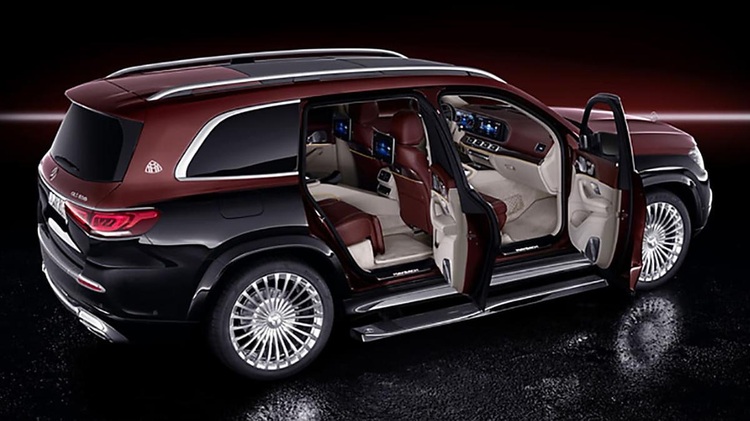Understanding Pricing Strategies for Chinese Luxury Cars
The Chinese luxury car market has experienced significant growth in recent years, with domestic manufacturers increasingly competing against established international brands. This shift has led to intriguing pricing strategies that balance aspirational appeal with market realities. Understanding these pricing approaches provides insight into the evolving landscape of Chinese luxury automobiles and their positioning in both domestic and global markets.

How do Chinese luxury car prices compare to international brands?
Chinese luxury car prices generally fall into a competitive range when compared to their international counterparts. Domestic brands often position themselves as offering similar features and quality at a more attractive price point. This strategy aims to appeal to value-conscious consumers who desire luxury but may be hesitant to pay premium prices for established foreign marques.
However, it’s important to note that pricing is not uniform across all Chinese luxury car manufacturers. Some brands position themselves as direct competitors to high-end European and American luxury vehicles, with prices to match. Others focus on the entry-level luxury segment, offering more accessible price points to attract first-time luxury car buyers.
What factors influence Chinese luxury car pricing?
Several key factors contribute to the pricing strategies of Chinese luxury cars:
-
Manufacturing costs: As domestic production capabilities improve, Chinese manufacturers can often achieve lower production costs compared to imported luxury vehicles.
-
Brand positioning: Newer Chinese luxury brands may price their vehicles more aggressively to gain market share and establish brand recognition.
-
Government policies: Incentives for domestic electric vehicle production and purchase can impact pricing strategies, especially for luxury electric models.
-
Market demand: Pricing adjusts based on consumer preferences and willingness to pay for specific features or brand prestige.
-
Competition: The presence of established international luxury brands in the Chinese market influences how domestic manufacturers price their offerings.
How do manufacturing costs impact Chinese luxury car prices?
Manufacturing costs play a crucial role in determining the final price of Chinese luxury cars. Domestic production often allows for lower labor costs and reduced logistics expenses compared to imported vehicles. Additionally, Chinese manufacturers benefit from well-established supply chains within the country, potentially leading to more cost-effective sourcing of components.
However, the pursuit of luxury status often requires significant investment in research and development, advanced technologies, and high-quality materials. These factors can offset some of the cost advantages, particularly as Chinese brands seek to compete on quality and features with international luxury marques.
What is the pricing landscape for Chinese luxury electric vehicles?
The electric vehicle (EV) segment is a key battleground in the Chinese luxury car market. Pricing for luxury EVs from Chinese manufacturers often reflects a balance between advanced technology offerings and the need to remain competitive against both domestic and international rivals.
| Brand | Model | Starting Price (CNY) | Key Features |
|---|---|---|---|
| NIO | ET7 | 448,000 | Long range, advanced autonomous driving |
| Li Auto | Li L9 | 459,800 | Extended-range electric SUV, luxury interior |
| XPeng | P7 | 229,900 | AI-powered smart features, sleek design |
| BYD | Han | 229,800 | Blade battery technology, premium styling |
Prices, rates, or cost estimates mentioned in this article are based on the latest available information but may change over time. Independent research is advised before making financial decisions.
The pricing of Chinese luxury EVs often includes consideration of government incentives, which can significantly impact the final cost to consumers. Manufacturers may adjust their pricing strategies to ensure their vehicles qualify for these incentives while still maintaining a luxury positioning.
How are Chinese luxury car brands developing their pricing strategies?
Chinese luxury car brands are employing various pricing strategies to establish themselves in the market:
-
Value proposition: Many brands focus on offering competitive feature sets at lower price points than established luxury brands.
-
Gradual price increases: As brand recognition and perceived quality improve, some manufacturers gradually increase prices to reflect their enhanced market position.
-
Segment-specific pricing: Brands may offer a range of models across different price points to capture various segments of the luxury market.
-
Technology-driven pricing: Advanced features, particularly in EVs and autonomous driving capabilities, are used to justify premium pricing.
-
Limited editions and customization: Exclusive models and personalization options allow for higher price points and enhanced brand prestige.
As Chinese luxury car manufacturers continue to evolve and expand globally, their pricing strategies are likely to become increasingly sophisticated. The balance between competitive pricing and luxury positioning remains a key challenge as these brands seek to establish themselves as credible alternatives to traditional luxury marques.




